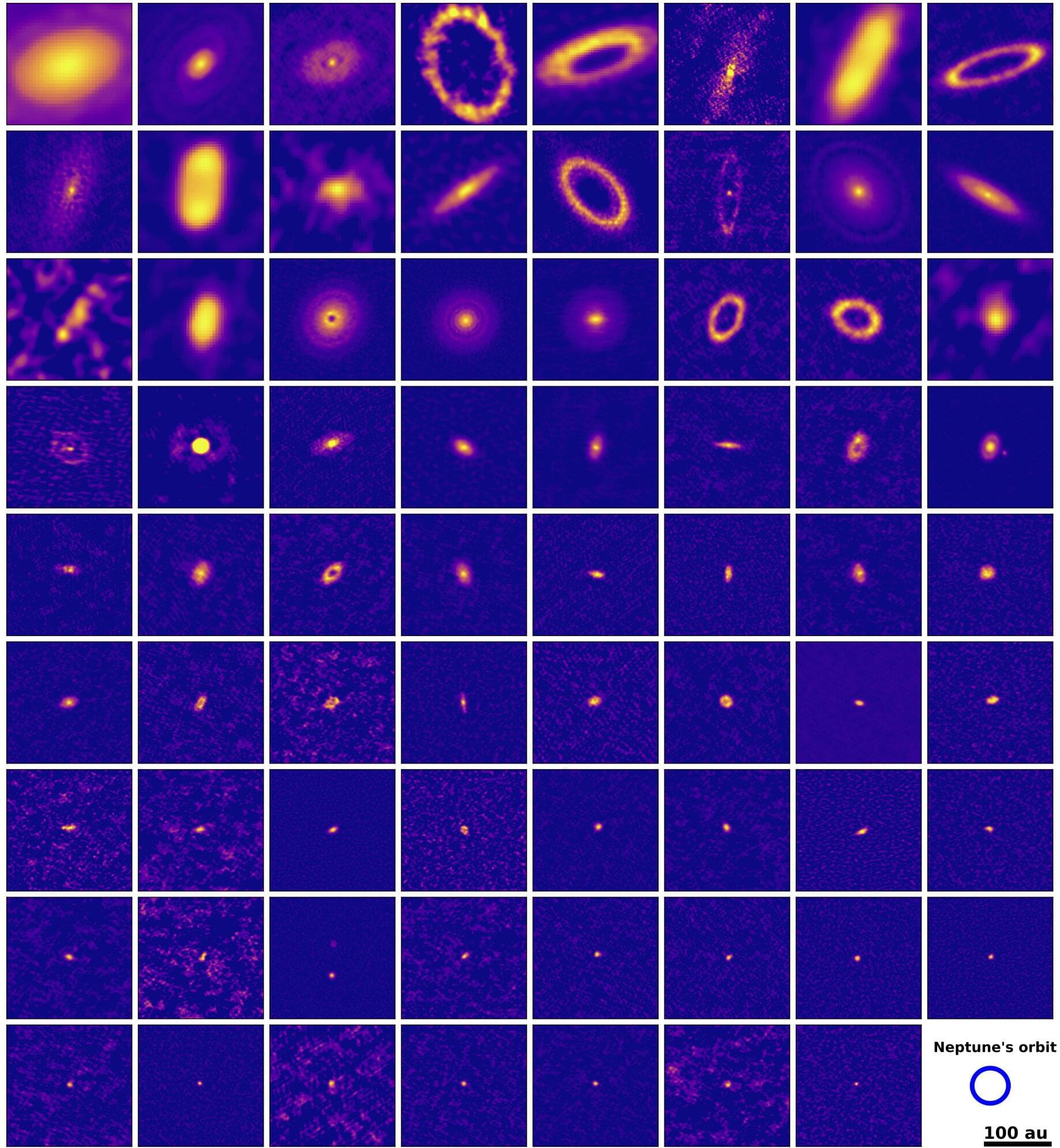Many protoplanetary disks in which new planets are formed are much smaller than thought. Using the Atacama Large Millimeter/submillimeter Array (ALMA) scientists of the Leiden Observatory (the Netherlands) looked at 73 protoplanetary disks in the Lupus region. They found that many young stars host modest disks of gas and dust, some as small as 1.2 astronomical units. The research, accepted for publication in Astronomy & Astrophysics, establishes an important link between observed protoplanetary disks and exoplanets.
In the past decade, astronomers have imaged hundreds of protoplanetary disks around young stars using powerful radio telescopes on Earth, like ALMA. When compared to the size of our own solar system, many of these disks extend far beyond the orbit of Neptune, our outermost planet. Furthermore, most of the disks show gaps where giant planets are thought to be formed. Research of Ph.D. candidate Osmar M. Guerra-Alvarado, postdoc Mariana B. Sanchez and assistant professor Nienke van der Marel of the Leiden Observatory now show that these disks might not be typical.
Using ALMA, the researchers imaged all known protoplanetary disks around young stars in Lupus, a star-forming region located about 400 light years from Earth in the southern constellation Lupus. The survey reveals that two-thirds of the 73 disks are small, with an average radius of six astronomical units. This is about the orbit of Jupiter. The smallest disk found was only 0.6 astronomical units in radius, smaller than the orbit of Earth.
